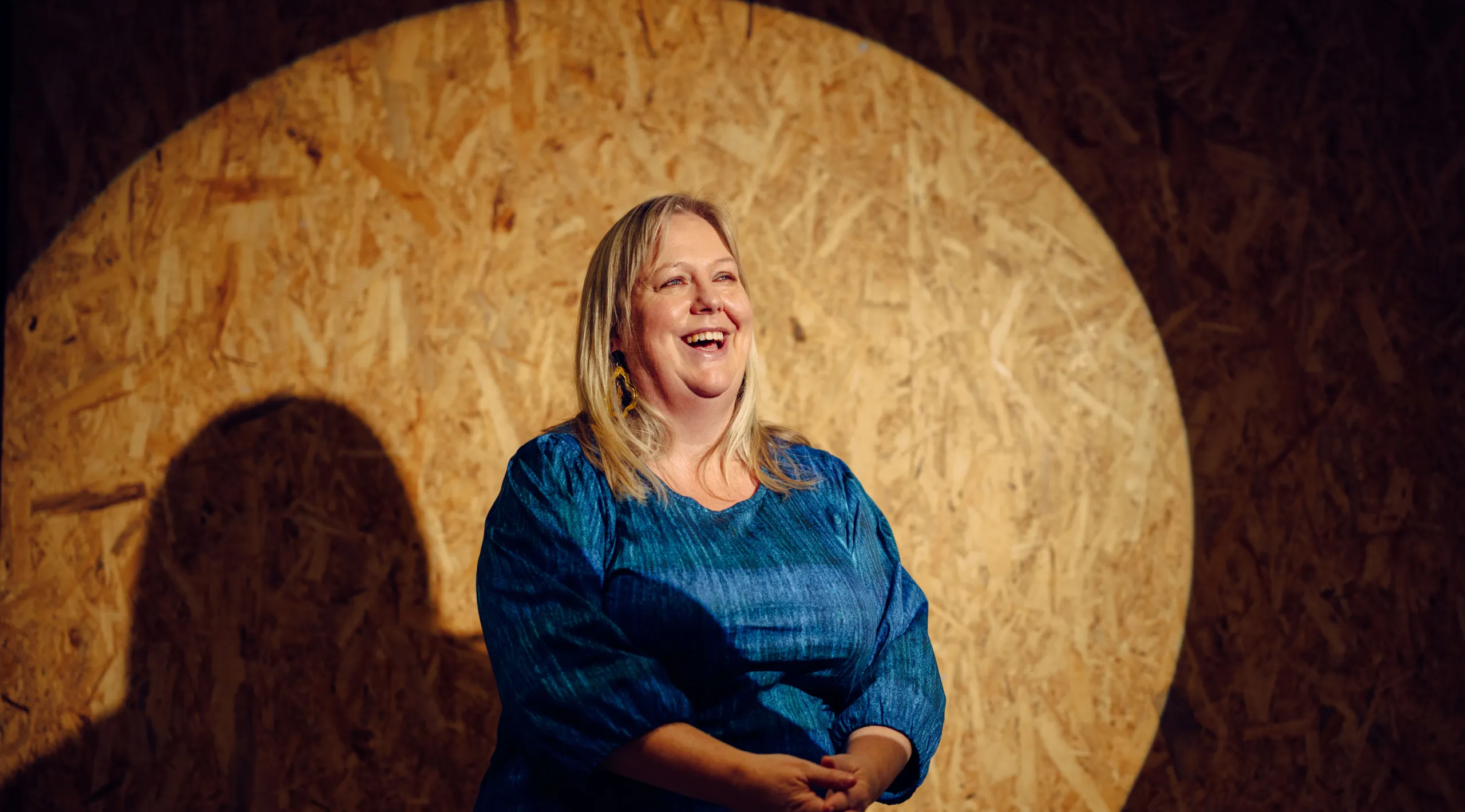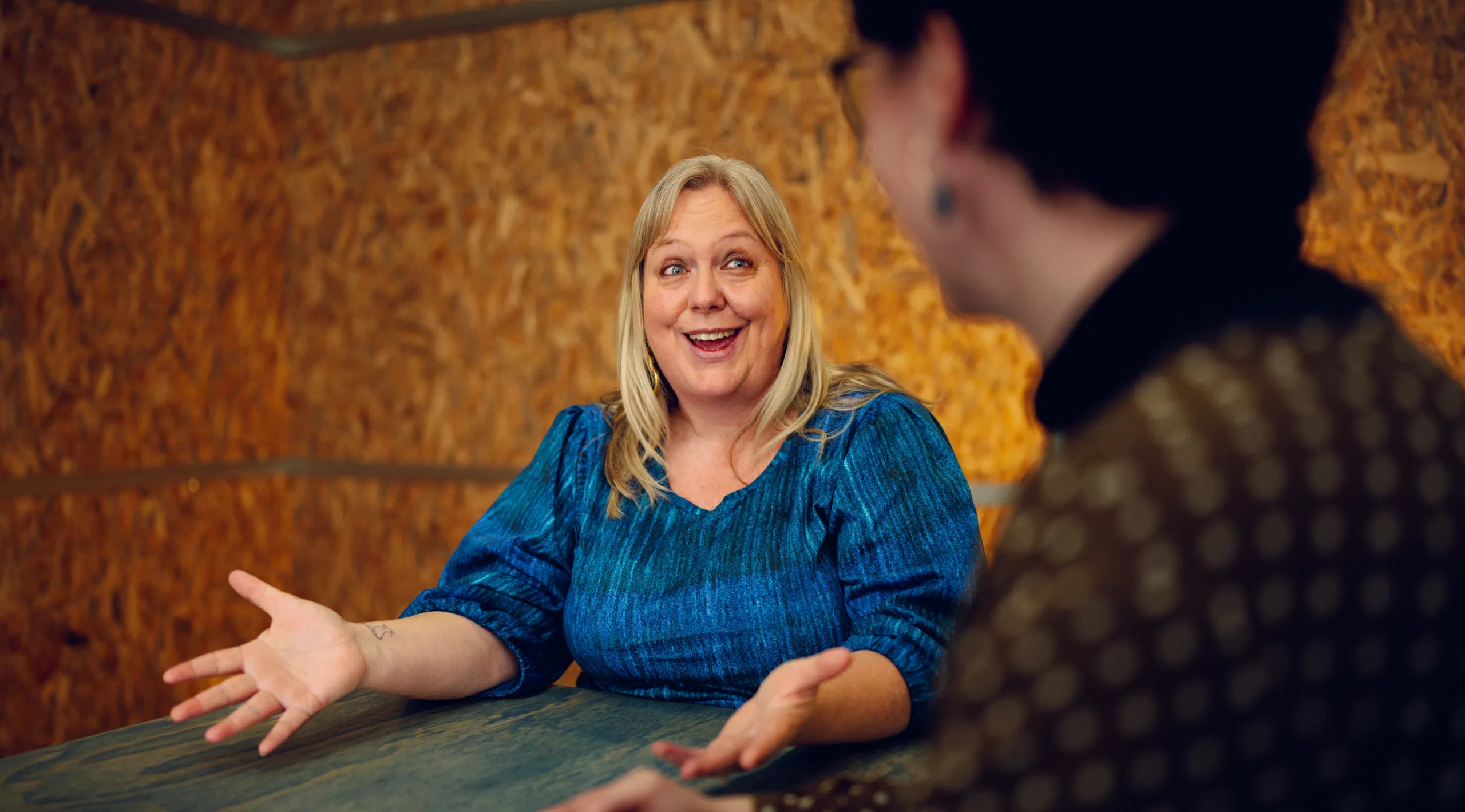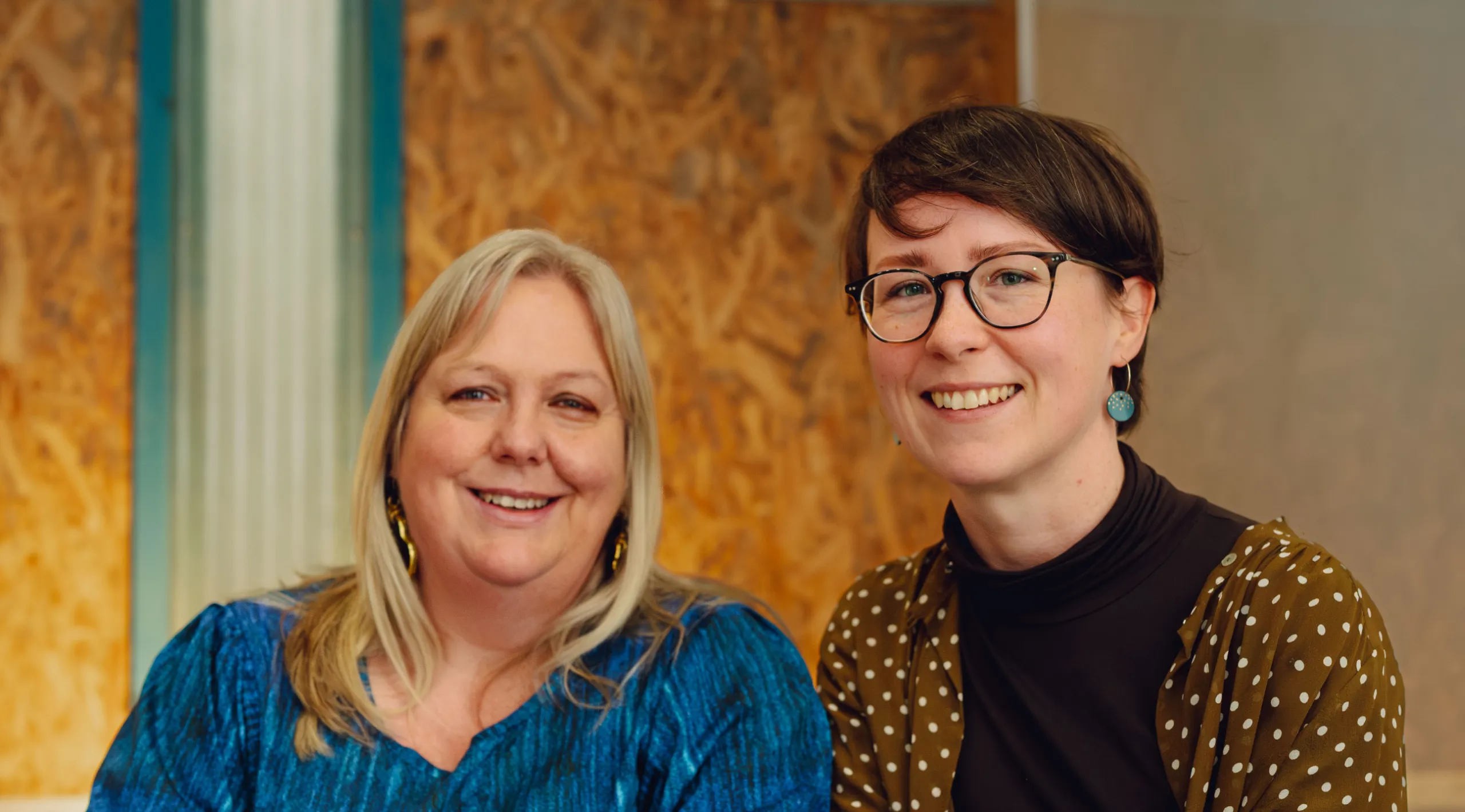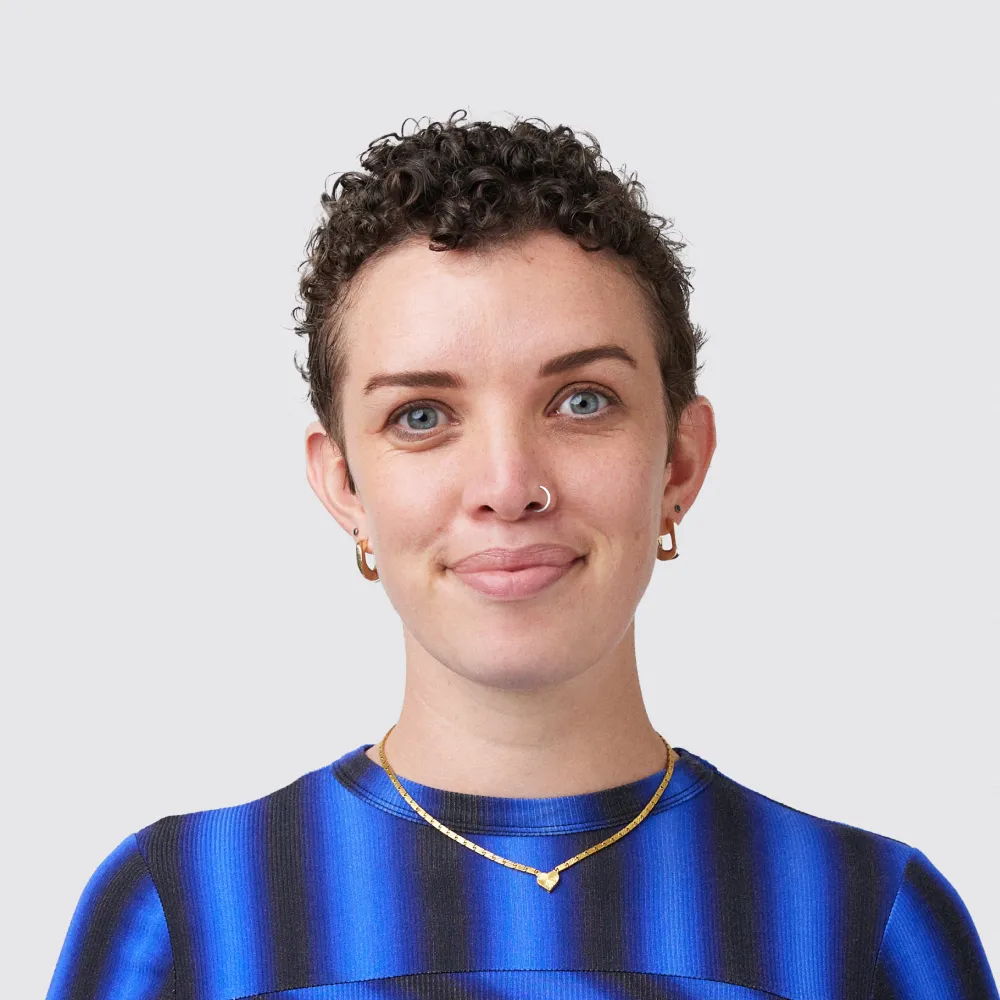Sam Read, Head of Education Services at Sexual Health Victoria , has dedicated three decades to nursing and sexual health education. Facing rising misinformation and political challenges, she remains committed to evidence-based approaches that prioritise young people’s voices.
“We need to listen to young people… Young people are saying that they want more explicit conversations. And it’s up to us to translate what they’re saying and deliver more nuanced discussions about sexuality, relationships, consent, and pleasure.”
Sam Read, Head of Education Services, Sexual Health Victoria
Beata Klepek, Design Research and Accessibility Director, Today

What motivated you to specialise in sexual and reproductive health and wellbeing education?
I’ve been a nurse for 30 years, and I often say that I started my career in sexual reproductive health as a young person. I started my nurse training at 16 and was on the wards by 19. Reflecting on that, I realise I was remarkably young to be caring for clients, their families, and patients. I truly appreciated that time and the growth it brought to my nursing career.
Over that time, I quickly discovered a real passion for working with young people who were, let’s say, at risk or outside of the mainstream education space or living space. I started working in sexual and reproductive health in my early twenties, and I was fascinated by the lack of education that young people were receiving. I was also reflecting on my own lack of education around relationships and sexuality, and having the information to make the choices that were right for me. All of this contributed to wanting to work in sexual health and education.
If someone asks you what you do, how would you explain it?
I’m Head of Education Services at Sexual Health Victoria. I’m responsible for a really broad team of educators in the clinical education space—doctors, nurses, allied health professionals, Aboriginal health practitioners and workers—and also schools, community and disability teams as well. Our large team of educators delivers sexual health education, relationships and sexuality education across Victoria to a range of different audiences.
That’s a huge remit. How do you deliver education services to such a diverse community base, and what do you do to ensure that they feel trust and safety?
That’s a big and very important question. Ensuring excellence in the quality of education we provide is the first thing, and the second thing is ensuring educator wellbeing. We must have those two things to be successful.
We invest a lot of energy in building the right team that shares the same values. We have expert educators from a diverse range of backgrounds, and we recognise that diversity is a strength. By representing the diversity of the world, our education is more effective.
We have robust frameworks in place to ensure the quality of education we provide. So, as well as being expert educators, whether it’s a teaching background or a background in sexology, for example, we are also guided by Department of Education policy that really supports best practice, evidence-based relationships and sexuality education.
What is the biggest misconception people might have about the work that you do, and what would you say to correct it?
Oh, I’ve had all sorts of wild things. It doesn’t take much to step outside of the usual work environment, or my chosen social environment, to see different perspectives that people can hold in the community.
Sexual Health Victoria has been around for more than 50 years, with a strong foundation in feminist principles, particularly in ensuring accessibility to the pill and building on that foundation.
The misconceptions people have about my role include statements like “our children are too young to receive this type of education” and “that's not your role as a school or an educator to be the provider of that education to my child or my young person.” There are often questions about gender and identity, and there are often questions about why we talk about things like pleasure as well.
And I or any member of my team could talk about this for hours. Still, we’re guided by policy and organisations like UNESCO, which discuss the rights of humans to receive information about their bodies and relationships, enabling them to make informed choices. It’s also a protective factor to deliver relationships and sexuality education early in a way that is age and stage appropriate for young people and children.
What that looks like in practice is teaching primary school children about the correct names for their body parts. So things like explaining that the outside skin is called the vulva. The reason we do this is that if there has been any potential harm, the young person can describe what happened to them. So it’s a critical protective factor to talk to young people and children about these things. So we explain that to communities, to schools, and parents and carers as well.
We fundamentally believe that delivering relationships and sexuality education is a relationship between the community, parents, carers and the people that are supporting that young person, the school environment, with the child or the young person at the centre of that.
The misconceptions people have about my role include statements like “our children are too young to receive this type of education” and “that's not your role as a school or an educator to be the provider of that education to my child or my young person.”
Sam Read

I like the way that you described it, with the young person at the centre. It mirrors a lot of the work that we do here at Today. How do you involve young people throughout the work that you do, and how do you co-create some of the education that you're delivering?
The curriculum guides us, and we think about ways that we can include or increase the participation of young people in our sessions. We deliver activities to young people that include them and offer a chance for them to reflect on how they feel about those activities.
In every session, we'll give young people the opportunity to write questions in an anonymous question box. They can have a piece of paper in front of them, and they can write the question down at any time during the session. At the start of the next session, we always make sure we answer every question. And sometimes we do need to think carefully about how we answer that question in a way that is age and stage appropriate for those young people and children, and we often collaborate as a team on some of those questions.
I would like to see more opportunities for co-design and hearing the voices of young people in the creation of content in the future. I think that's a gap in the sector.
The Australian Research Centre into Sex, Health and Society deliver a survey to secondary school students every four years. It's been rolled out for over 20 years, and it's quite an incredible piece of research.
The latest survey has been completed, and we’re awaiting the results. But we have a lot of information about what young people think and feel about relationships, about how they feel about their sexual experiences, for example. Still, I don't see a clear application of their thoughts and reflections and what they’re doing. I don't see a clear application of that into practice at this current time.
So what we try to do with the secondary school students, for example, is to say, “this research is saying this about you. How do you feel about that? Does that reflect your experiences?” For example, we might say something like “we know about 50% of students use condoms. Does that reflect your experience? What do you think that is about? What do you think some of the barriers might be to using barrier methods,” but without placing any stigma or blame on those young people.
There are several ways we try to include young people, but I’d like to see this approach strengthened, particularly in how relationships and sexuality education is delivered.
What do you see as some of the more significant systemic changes that you would need to make for that to happen?
I think about this a lot, so thank you for asking about it.
I think about the application of misinformation and disinformation and the role that it’s playing in broader society at the moment. There are numerous ways for people to access information, but I also think that some individuals are intentionally seeking methods to spread misinformation. And that is a real and alive barrier to people, especially young people, receiving accurate, evidence-based, informed, respectful information about their bodies, about relationships and about choice.
And that is tied into the current political environment as well, and seeing the effects of what’s happening in the United States play out. The withdrawal of diversity and inclusion support for communities is filtering down—I believe—to Australia as well. I think that’s a very real risk, or what I would call a wicked problem that we’re facing, that’s an example of a systemic barrier that’s real and playing out at the moment.
In a practical sense, we’re seeing this play out in the work we do, with heightened fears about our identity, ensuring we are safe individuals in the school environment, and questioning our purpose and agenda. There’s definitely an increased fear playing out in schools, which is coming somewhat from the parent carer community, and that’s because they want to know who is in the classroom and what you are educating their children about.
That’s why it's really critical for us to focus on the quality of the work that we deliver—ensuring that it’s evidence-based, best practice information, linked to policy—because we want to build trust with the communities we serve and work with. We want young people to have the information that's right for them so that they can make choices that are right for them, but also because we also know that it reduces harm.
There’s a very significant evidence base to show that early education about relationships and sexuality reduces the risk of sexually transmitted infections, reduces the risk of unintended pregnancies, and it increases opportunities to have healthy, respectful relationships throughout life.
We want young people to have the information that's right for them so that they can make choices that are right for them, but also because we also know that it reduces harm. There's a very significant evidence base to show that early education about relationships and sexuality reduces the risk of sexually transmitted infections, reduces the risk of unintended pregnancies, and it increases opportunities to have healthy, respectful relationships throughout life.
Sam Read


Healthy and respectful relationships are something that is talked about a lot more in media at the moment. How do you see the collaboration between different sector partners to advance progress in that space?
I think about the work that the family violence sector are doing at the moment. Particularly the work that they’re doing around primary prevention of family violence, gender-based violence, sexual violence, and the work that we're doing in classrooms every day, which is about teaching about protective behaviours, which is primary prevention work as well.
I see a strong opportunity for the sectors to collaborate more closely in order to deliver that work. There are some really great examples of how that’s happening now, like the Respectful Relationships initiative from the Department of Education in collaboration with Our Watch, to deliver an incredible resource across schools.
What I’m hearing on the ground, though, is that teachers don’t always feel confident or skilled in delivering that education. So I think there’s an opportunity for some of those sectors to collaborate together in order to build confidence of educators, teachers, and wellbeing staff to deliver this critical education. Teachers report that they not only don’t necessarily always have the confidence to deliver this education, but that there’s a crowded curriculum as well.
So I would advocate for a stronger focus on wellbeing initiatives within education, because I believe that young people and children need to be feeling good about themselves and feeling healthy in order to learn. A clear example of this is we’ve recently begun a partnership to work with the Department of Education to deliver menstrual health and pelvic pain education across 400 Victorian government schools.
This is an incredible initiative where students from year 5 to year 10 have the opportunity to receive quite specific information in order to increase help seeking early if people are experiencing pain or difficulties with menstruation. This is because we know that a high proportion of young people are missing school—not receiving the education that they need or deserve—because they're in pain. That’s a very clear example of how collaboration can work really effectively.
That’s an incredible initiative, it’s wonderful to see that even within my lifetime, you can start to talk about women’s bodies in a way that elicits understanding and empathy and actual change so that you don’t have to miss school.
Oh absolutely. I think back to my education, which was separated between boys and girls, and the girls were shown the period products, but not the boys. So the boys would be eager to get hold of them and chase around the playground and what have you. Moving into this program, where we’re delivering education to all genders together, we’ve found some interesting findings so far. For instance, the boys are saying, “Oh, this is actually really important for me.”
We’re seeing a lot of empathy and respect from the boys who are saying, “This education is really important because I might need to support someone like this when I grow up.” And that's incredible. I think it’s a real myth that boys don’t want to know or aren’t interested in this type of information. They have the same right to this type of education.
How do you measure success at Sexual Health Victoria? What does that look like?
It’s about feedback, collaboration, building trust and partnerships. We’ve been focusing on building trust with our partners and the communities we work with. This involves listening more than talking with the community groups we collaborate with.
The first pilot of Consent Matters supported the youth and community sector, and we did have significant reported increased rates of confidence and knowledge. But what we also saw in terms of understanding impact, is that a number of those people engaged in the training reported that they had gone out, adapted the program and delivered it to their communities in a way that was right for them.
We’d worked with the Aboriginal Torres Strait Islander community who were working with a group of young people, and they were able to adapt the activities in a way that was safe and appropriate for their community, which is exactly the impact that we want to have. We want it to be safe, meaningful, and relevant. They also reported that participants were having more conversations as a result.
Even just feeling that they had the ability to start conversations about relationships, sexuality, and consent demonstrates a significant impact because before that, they were saying “we don't know if it's OK to have these conversations.”
Sometimes I think there's a perception with young people who are outside the mainstream schooling system, or maybe at risk of or have experienced sexual violence, that it might re-traumatise them to be having discussions. So there's genuine concern about starting those conversations.
But those young people have the same right as other young people to have conversations and education. We focused on trauma-informed approaches and creating safe spaces for those conversations. We also considered what help-seeking avenues might be available for those young people. That could be letting the young people and their supporters know that the session's about to happen, what it's going to be about, and then having services like counselling available.
That’s a really great example. If you could wave a magic wand and change one thing about how sexual and reproductive health is taught or discussed in Australia, what would that be?
Listening to young people and translating what they’re saying.
So, more nuanced discussions about sexuality, relationships, consent, and pleasure. Young people are saying that they want more explicit conversations. There are many things I would want, but that's one of them.
I also want to have funding to deliver more education to young people because I think they all deserve it.
I would like to collaborate more closely with the parent and carer community, as well as with those who support young people, to ensure they are well-informed about the evidence base for delivering this education. So, really, more intentional work is what I'd absolutely love to do because we know that when we deliver that information, it goes a long way to addressing those fears about what we're delivering.
We’re not there to challenge people's values. We’re very much there to acknowledge that people have values that come from home, whether that's their faith, religion, or cultural background. That’s absolutely what’s right for them and their family. What we’re doing is providing information about what’s true in the world, about their bodies, about relationships and the ability to make choices.
We’re not there to challenge people’s values. We're very much there to acknowledge that people have values that come from home, whether that's their faith, religion, or cultural background. That’s absolutely what’s right for them and their family. What we’re doing is providing information about what’s true in the world, about their bodies, about relationships and the ability to make choices.
Sam Read

What is one piece of advice you would give to someone who wants to make a difference in the field of public health and education?
Look out for connections. Who can you connect with?
Have a look at LinkedIn, see what's going on, who’s connecting with whom. Have a look at our website. Have a look at the Department of Education, observe what's happening around you, take that balcony view, and seek to make connections, because the people who work in this field are passionate, but they’re also really generous.
We’ve had so many people reach out to say, “Gosh, I'd really love to work in this space. How can you support me?” And someone is always willing to have that conversation, whether it’s pointing to a particular type of education that someone might like to start learning about, or how to get more experience on the ground. Connection is key.
That’s really great advice.
Where do you see the conversation about sexual health heading in the next 25 or 10 years, and what is Sexual Health Victoria doing to prepare for that?
It is about being well-informed and well-prepared. As I mentioned earlier, we’re seeing a rise in misinformation and disinformation. We’re seeing the global impacts of the withdrawal of support around diversity and inclusion, and we need to be well prepared and realistic about what’s happening on the ground.
We need to continue to look for who we can collaborate with to strengthen our advocacy approach, to ensure that people’s rights around reproductive health and reproductive justice are maintained. I think that’s for everybody, but I will mention that that needs to have a focus as well on women and gender diverse folks, because they seem to be targeted with things like the rollback of or the attempted rollback of access to abortion, for example.
We need to have a heightened sense of awareness. We need to collaborate together to be prepared, because others are very well prepared and very well funded. So I think collective advocacy and action is going to be really critical in the next few years.
In the long term, it’s about having resilience and persevering, holding to your purpose. There’s something I learned from the Williamson experience I had in 2023, which was “how do you hold your purpose from where you are now?” And that just resonates with me so strongly because, yeah, things can be difficult in the moment, but it’s always important to take a step back and look at the wider perspective.
I also think it can be really helpful to seek alternative views. You know, why do you feel like that? What is the fear that's sitting underneath the way that you might be feeling or risk that you might think is part of that?
